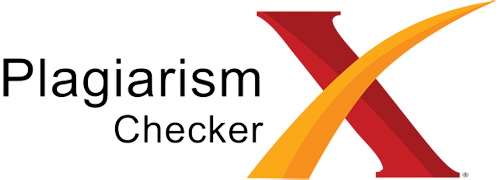Increasing Creativity of the 4th Grade Students at SDN Gebangan Using PjBL Model with TaRL Approach
DOI:
https://doi.org/10.53863/ejou.v3i02.849Keywords:
Creativity, PjBL, TaRLAbstract
Creativity is an important aspect for students that need to be developed in learning. Creativity can help students in developing the ability to think critically, innovatively and problem solving which is essential in facing challenges in the era of globalization. However, recent research has shown a decrease in the level of student creativity at various levels of education. PjBL or Project Based Learning model is a learning model that emphasizes projects or collaborative assignments that are relevant to students' real lives. Meanwhile, the Teaching at The Right Level (TaRL) approach is an approach in which learning is adjusted to the level of understanding of students. This study aims to explore the use of the Project Based Learning (PjBL) model with the Teaching at The Right Level (TaRL) approach in increasing the creativity of fourth grade students. In this study, students will be involved in real projects that will enable them to use critical thinking, collaboration and innovation skills in solving problems. In addition, the TaRL approach will ensure that students gain a solid foundational understanding before moving on to more complex concepts which will provide them with an important foundation from which to develop their creativity. The research method used was classroom action research involving fourth grade students at SD Negeri Gebangan as the main participants. Data will be collected through class observation and creativity tests. The results of this study are expected to provide concrete evidence about the effectiveness of using the PjBL model with the TaRL approach in increasing the creativity of fourth grade students at SD Negeri Gebangan.
Keywords: Creativity, PjBL, TaRL
References
Cahyono, S. D. (2022). Melalui Model Teaching at Right Level (TARL) Metode Pemberian Tugas untuk Meningkatkan Motivasi dan Hasil Belajar Peserta Didik Mata Pelajaran Prakarya dan Kewirausahaan KD. 3.2/4.2 Topik Perencanaan Usaha Pengolahan Makanan Awetan dari Bahan Pangan N. Jurnal Pendidikan Tambusai, 6(2), 12407-12418.
Daryanto, dan Mulyo Rahardjo. (2012). Model Pembelajaran Inovatif. Yogyakarta: Gava Media
Fathurrohman, Muhammad. (2016). Paradigma Pembelajaran Kurikulum 2013
Ghufron & Risnawita. (2011). Teori-Teori Psikologi. Yogyakarta: Ar-Ruzz Madia.
Strategi Alternatif Pembelajaran di Era Global. Yogyakarta: Kalimedia.
Hekmah, N. (2022). Implementasi Alat Peraga IPA “Roket Air” Berbasis Project Based Learning (PJBL) Dengan Memanfaatkan Barang Bekas Pada Materi Tekanan Hidrostatis Siswa SMP. EduCurio: Education Curiosity, 1(1), 131-138.
Mulyasa. (2014). Pengembangan dan Implementasi Kurikulum 2013. Bandung: Remaja Rosdakarya.
Munandar, Utami. (2012). Mengembangkan Bakat dan Kreativitas Anak Sekolah. Jakarta: Gramedia Widiasarana Indonesia.
Ridha, M. R., Zuhdi, M., & Ayub, S. (2022). Pengembangan perangkat pembelajaran PJBL berbasis STEM dalam meningkatkan kreativitas fisika peserta didik. Jurnal Ilmiah Profesi Pendidikan, 7(1), 223-228.
Satoto Endar Nayono, dan Nuryadin ER. (2013). Pengembangan Model Pembelajaran Project Based Learning pada Mata Kuliah Computer Aided Design.
Titu, M. A. (2015). Penerapan model pembelajaran project based learning (PjBL) untuk meningkatkan kreativitas siswa pada materi konsep masalah ekonomi. In Prosiding Seminar Nasional (Vol. 9, pp. 176-186).
https://guru.kemdikbud.go.id/kurikulum/perkenalan/pengajaran-sesuai-tingkat-kemampuan/ diakses tanggal 27 April 2023 6.51 AM
Downloads
Published
How to Cite
Issue
Section
License
Copyright (c) 2023 Diantika Pebriyanti,Meita Fitrianawati,Dwi Astuti

This work is licensed under a Creative Commons Attribution-ShareAlike 4.0 International License.
Authors retain copyright and grant the journal right of first publication with the work simultaneously licensed under a Creative Commons Attribution-ShareAlike 4.0 International License that allows others to share the work with an acknowledgment of the work’s authorship and initial publication in this journal














